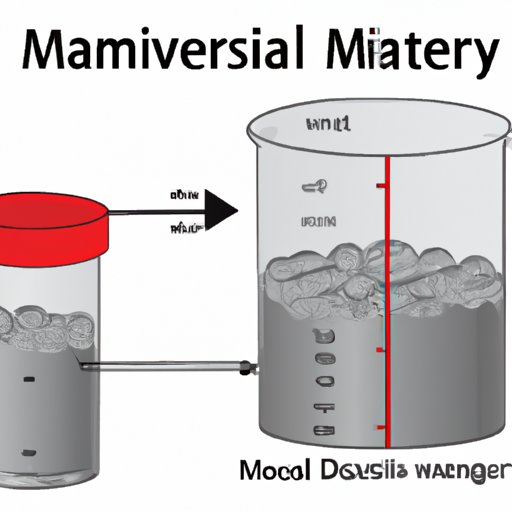
I. Introduction
Calculating density is an important concept in science and can be used in multiple applications. To find the density of an object or substance, we need to determine its mass and volume. In this article, we will guide you through how to find mass and volume and calculate density, along with its significance in scientific research.
II. The Simple Guide to Calculating Density: Finding the Ratio of Mass and Volume
Density is defined as the amount of mass per unit of volume, and it helps us understand the physical properties of a substance. The formula for calculating density is: Density (ρ) = Mass (m) ÷ Volume (V). To find mass and volume, we can use various tools such as a balance, ruler, and graduated cylinder.
III. Unpacking Density: A Step-by-Step Tutorial to Calculate Mass and Volume
The first step to finding density is to measure mass and volume. You can easily measure mass using a balance, and volume can be measured using a graduated cylinder or a ruler. To measure the volume of a regular-shaped object, simply multiply the length, width, and height. For irregular objects, the displacement method can be used.
Materials you’ll need to measure mass and volume include a balance, weight paper or container, ruler, and graduated cylinder.
IV. The Importance of Density in Science: Understanding Mass and Volume Calculations
Density is an essential concept in science, and it is used in various fields like chemistry, physics, and geology. In chemistry, we use density to identify substances and determine the purity of a product. In physics, density plays a crucial role in calculating pressure and buoyancy. In geology, density helps us determine the composition of rocks and minerals.
Real-life examples of how density is used in scientific research include measuring the density of air to determine its pollution levels, calculating the density of materials used in buildings to ensure their stability, and determining the density of gas in planetary atmospheres to understand their composition.
V. Mastering Density Calculations: Tips and Tricks to Find Mass and Volume with Ease
When calculating density, it is essential to take the correct measurements and avoid common mistakes. To simplify measurements, use equipment that has a higher accuracy, try using digital rather than analog equipment, and repeat measurements to ensure accuracy.
Some common mistakes to avoid include not taring the balance correctly, misreading measurements from the graduated cylinder, and forgetting to convert units of measurement.
VI. From Mass to Volume: How to Calculate Density in Five Easy Steps
To summarize the steps required to calculate density, we can follow these five simple steps:
- Step 1: Measure the mass of the object.
- Step 2: Measure the volume of the object.
- Step 3: Use the formula, Density (ρ) = Mass (m) ÷ Volume (V), to calculate the density value.
- Step 4: Record the density value and units of measurement used.
- Step 5: Check the answer for accuracy by verifying units of measurement and rechecking calculations.
VII. Conclusion
Congratulations! You now know how to calculate density with ease and understand the importance of these calculations in science. Density is a fundamental concept that is used in various scientific fields and real-life applications, from measuring air pollution levels to understanding the composition of planetary atmospheres. Remember to avoid common mistakes, use the correct equipment, and double-check your measurements to ensure accurate results.




